Immediately after the first record-breaking heat-wave in Victoria - before the major fires - the Coroner came out and said that the death rate had increased noticably. [1]
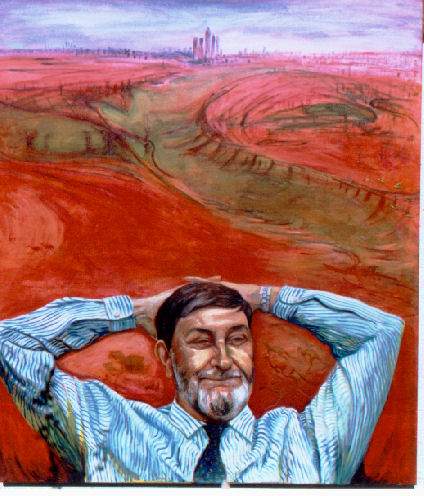 Illustration from an oil portrait by Sheila Newman of Barry Jones, Chairman of Australia's Population Carrying Capacity Inquiry, 1994
Illustration from an oil portrait by Sheila Newman of Barry Jones, Chairman of Australia's Population Carrying Capacity Inquiry, 1994

Government policies made Melbourne residents vulnerable to extreme weather.
Deaths from heat-related illness, with power-supply failures to homes relying on air-conditioners and fans as their sole means of cooling, and dry gardens exacerbating vulnerability to fire, can all be related to the push by three successive Victorian governments and two Federal governments to increase Australia's population numbers.
In Melbourne, the ambulance service responded to 1600 jobs a day, double the normal figure of 800.
Ambulance worker, Mr Holman said the heatwave's impact was sharpened by the loss of power, and therefore lack of air conditioning, in parts of the state and concern that some hospitals would have to be evacuated."[1]
The policy of increasing urban density also increased the intensity of urban activity, which creates heat.
The style of many new houses is antithetical to sensible architecture for Australia. The lack of eves or verandas runs counter to soundly-based local culture. Thin walls, big glass windows without shade and tiny tree-less concrete yards packed closely together provide little defense against direct sunlight or drying winds. The sealed surfaces absorb heat and give no opportunity for water or plants. Air-conditioners have become common. Unfortunately, they pour heat into the atmosphere, raising the temperature again. What other choice did some people living packed in badly designed mass-produced housing or cheap sub-standard accommodation in our overpriced rental-market have? And what chance did they have when the power-supply failed due to predictable and exploited for profit over-demand?
Other factors worsening our chances in Melbourne would be allowing the practice of moon-scaping, i.e. the removal of cooling trees to facilitate the construction of new housing estates. (One willow, for instance, has been described as "equivalent to 28 reverse cycle air conditioners. They absorb a tremendous amount of heat from the sun and convert it into cool moist air. At night, if the wind in not too strong all that moisture comes back down to earth and settles on the cool vegetation and warms the local climate. It won't happen if the ground is hot and barren....it doesn't rain too often on a desert." - Comment from farmer on Natural Sequence Farming forum) It is well-known that the soil loss entailed by moonscaping also releases enormous amounts of carbon contained in topsoil.
Predictable water scarcity with unfair restrictions could all have been avoided and were foreseen
And then there were the restrictions on using water to facilitate this much resented process of urban intensification. For, as various premiers kept on stating so cynically, we would not have enough water for the population growth if we did not cut back, cut back more, continue to cut back.
Even more cynically, state politicians gave the impression that they had no control over the population growth. And some of them (e.g. Steve Bracks) simultaneously pretended that deaths were outnumbering births, whilst stating that we had to have more houses for the growing population. This absurdity was allowed to go unchallenged on the ABC on Jon Faine's program.[2a] (Indeed, the ABC sounds more and more like a real-estate promoter.)
No slack was left in the system by people supposed to be professional planners!
The power failures and the water restrictions would not have been necessary if we had not increased our population beyond the capacity to supply Victorians with adequate and affordable power and water.
No slack was left in the system. Scientific caution and citizen welfare were jettisoned for pie-in-the-sky about "Future generations" and various spokespersons spoke in a mealy-mouthed way about virtuous reductions in personal water-use. Industry kept expanding its water-use at the same time, with little information available about this to the public.
Just before the heat-wave and the fires the State of the Environment Victoria Report came out, supposedly lambasting the government for our mutilated environment, and warning that human population growth was placing the greatest demand on this environment which sustains us, bringing us close to eco-collapse. However the Commissioner, Dr Ian McPhail, then gave the government the go-ahead to continue this insane growth. What is the responsibility of the Chairman and the participants in this report for business as usual and its consequences?
And then the Victorian ALP started to let Victorians know that the one million more people it had already dictated Melbourne citizens should submit to had overshot disasterously! At one stage Brumby mumbled something about perhaps we had had enough iimmigration - but never, at no stage, was reducing the rate of immigration allowed as a serious response. In Parliament the matter was treated. ridiculously, as one of 'too many guests invited to a BBQ' which we would all have to make welcome. Later, Brumby attempted to turn the dire situation of overloaded public transport during the petrol-price hikes to media advantage in Parliament, by boasting that more Victorians than ever were using public transport.
Even as late as 20 February, 2009, Federal Minister, Julia Gillard, was rejecting the idea of reducing our record high immigration in a half-dead economy. Then, on 26th of January, around 9.24am, Mr Brumby was asked by the populationist ABC radio announcer, Jon Faine, who was referring to loss of manufacturing jobs, "Do you think there should be cuts to immigration?"
Brumby- (pause and nervous cough- followed by approximately these words.)
"I said last year- we have been growing very fast the time is now to cruise along-not have our foot on the accelerator.
We don't need to increase immigration going forward. Our immigration figure in the last year was about 200,000
I say this number is about right for Australia."
So, who is responsible for power failures and water shortages and deaths from exposure to merciless heat in a city that has overshot its power and water supply? Who is responsible for the role that dessication of gardens may have played in the recent bushfires? Who is responsible for overshooting supply from the Thompson dam? Who is responsible for the empty recreational waters in numerous country towns, which could not pay the skyrocketing water-prices? Who is responsible for allowing community-built and paid-for public swimming pools to be closed down in hot suburbs like Sunshine, Footscray and country areas like Wodonga (several more examples) whilst nearby huge new housing estates privately franchised small indoor pools over which the community had no control?
And who paid the cost of these ridiculous and dangerous policies and turned a blind eye to their impact on democracy and survival in Melbourne and Victoria's towns?
What legal recourse do the families of the victims of imposed water and power shortages have?
What do the families of the victims of these dangerous and dictatorial policies have to say?
What costs can they demand from the government?
Who is responsible?
In my opinion, those who persistently, year after year, drove, promoted and marketed population growth are responsible. The authors of the Victorian government netsite inviting immigrants to come and live in Melbourne, the demographers who lent their 'expertise' to the growth lobby, and those media-presenters who always invite the pro-growthers to speak and make out that those who object to population growth are racists - thus frightening people from speaking up. Also those politicians and planners, and the policy reviewers, who resisted community objections, facilitating Melbourne 2030, and gave the impression that they had the authority to visit this burden upon us - and did - are responsible. They are all the more culpable for persisting year after year amid warnings of climate change. And what about those lobby groups, business-groups, and their representatives, who egged our governments on? (See:, /node/623, /node/569, /node/431, /node/421 - and more - for a rich source of suspects.)
High costs engineered and approved by government
The rising costs of necessities - notably power, water and shelter (homes) - is also related to demand, and this rising cost is another factor which discourages citizens from using enough water to keep their gardens moist, take baths and extra showers, or fill pools and ponds.
But the government has quasi-privatised power and water, which makes the situation so much worse. For instance the sector that provides power from electricity generators is now complaining that they cannot get bank-funding because of Rudd's mooted emissions trading plans. Why on earth did the government sell these generators off in the first place - leaving people hopelessly out of their depth in the private sector trying to make a profit from unsustainable fossil-fuel burning in the middle of a credit crunch, whilst the rest of us wait nervously for the next power failure? (See Annabel Hepworth, Katja Buhrer and Mathew Dunckley, "Climate plan hits power refinancing", Australian Financial Review, 25 February, 2009, p.1.)
Estimating water catchment capacity should be done with high and low rainfall records in mind, erring on the side of safety. This basic public health precaution has been completely ignored by government policy, which has done the opposite. And what has the government done about this engineered predicament? It is insisting on building a desalination plant in the middle of a closely-knit community, from which the transport of water over hundreds of kilometers, will require - MORE ELECTRICITY!
The government ministers, planners and economists involved in 'managing' our State's population overshoot of water and power supplies should be suspended from employment and publicly placed on trial for gross negligence towards Victorians' welfare, contributing to death and suffering.
Risk well-known last century and Danger signs obvious for more than 10 years
Victoria's Thompson Dam, which took ten years to fill, was once adequate for a population of around 15m people, which was the population of Australia in 1983, at the time of its completion.
It is not adequate now.
Between 15m and 21.5 million there were many chances to stop, but we were dragged onward by political desperados.
All Australian parliaments have had access to loads of information from scientists and historians that Australia would run into water-shortages if it grew its population past around 20 million people. The danger signs have been neon-lit for the past ten years. Changes to our climate already have reduced our carrying capacity and our economic viability (which both rely on our environment). Nothing we have done, no technology, has succeeded in reversing this process.
Vast body of literature on Australia's limited population capacity has been ignored at our peril by government
Taylor (1880-1963) argued that Australia could never support more than 65 million people due to its biophysical limitations. He later amended this to 20 million, assuming much higher per capita living standards. Not only does Taylor seem to have been the first to publish the connection between population numbers and affluence (consumption) against the background of local biophysical characteristics and constraints, but he eerily predicted the likely population of Australia as no more than 20 million in the year 2000.[2]
It was not until 1968 [a date coinciding with the release of Ehrlich's Population Explosion], that Australia's huge post-War immigration program began to be questioned in the light of its contribution to population growth and environmental impact.
Subsequently, between 1975 and 1994, there were seven national enquiries and reports which purported to or actually did examine the population question within the scientific context of environmental impact. Five were The National Population Enquiry (Borrie Report) 1975, which paid lip service only, The National Population Council Report 1992, which recommended a population policy; between 1990 and 1992, The National Greenhouse Response Strategy and The National Strategy for Ecologically Sustainable Development, which identified nine elements of a population policy consistent with ecologically sustainable development;[3a] and The Ahrlburg Report 1994, on the foreign aid implications of the economic impact of unrestricted population growth.
The Australian movement, Australians for an Ecologically Sustainable Population, which tried to have a scientifically-based philosophy, was formed in 1988. In 1994 an Australian Academy of Science symposium recommended early population stabilization on ecological, economic and quality of life grounds. The Australian scientific research center, CSIRO, began the 'Ecumene project,' an internationally-linked population modeling and projection study using environmental and economic data (discontinued by the Howard Government). In that same year Tim Flannery published his Australian best seller, The Future Eaters,[4] a scientific work on the ecological and economic evolution of Oceanic countries, which advocates a long term goal for Australia of between six and twelve million people.
Also in 1994 the Australian Population "Carrying Capacity" Report,[3]the "Jones Report" - chaired by Barry Jones), was published. More than 90 percent of submissions, including those from Aboriginal organizations, argued against population growth. The Inquiry's inspired recommendation was to separate political and administrative responsibility for population and immigration (to avoid contamination with racial issues). Immigration intake should become an instrument of population policy, rather than population policy a "long term side effect of ad hoc immigration policy."
The (then) Labor government, with Senator Bolkus heading immigration and ethnic affairs (who had promised the ethnic vote to the Prime Minister of the day, by favoring family reunion and a high migration program), could not deal with the "Jones" report. The Chairman Barry Jones was also the national president of the Labor Party. All hell threatened to break loose if the matter was put to parliamentary debate. An election was imminent. In the interests of Labor's return to power it was decided to keep a lid on the issues for fear of losing the ethnic vote. Jones expressed his opinion that the environmental vote would easily compensate for the ethnic vote, but failed to convince the Prime Minister.
In September 1995 the Government published its response to the 1994 United Nations International Conference on Population and Development. This reactionary document was the work of the Department of Immigration and Ethnic Affairs. It was also the Labor government's only reference to the matter of national population policy, which it rejected as too controversial. Other issues raised at Cairo were dealt with in a superficial manner and with only token reference to the environmental connection.
In March 1996 the Labor government was resoundingly voted out of power.
The Howard Government which followed came in partly because voters thought it less likely to rely on high immigration and practices like ethnic branch-stacking, which were disorganising the democratic organisation and representation of communities. Initially the Howard Government placed emphasis on skilled immigration as a means of 'controlling the numbers'. Unfortunately, after the Bracks Government "Melbourne Population Summit, " the Federal Government appeared to cave into the mass of pressure by developer-aligned media to raise immigration. The Howard Government raised immigration to the highest levels ever known and made these very difficult to estimate by dismantling the statistical series which Australia had kept since first settlement (a nearly unique credential for our country.)
After the Howard Government lost power, Rudd's labor government came in with the 2050 summit, which, in guise of a debate, guided the marketing of more policies to increase more rapidly Australia's population.
Do not for a minute think that the State Governments of Australia had no control over this. The opposite is true; the majority redefined their states and even their cities, as 'regions in need of immigration' - a terminology previously reserved for country areas. The Treasurer, Mr Lenders, once said that he didn't think that it was the job of government to determine how big Melbourne grew. Yet that is exactly what the Victorian State Government has been doing.
All these politicians responsible for growing our population had the information at their fingertips that what they were doing was dangerous. But they went ahead against every public and private objection.
Indeed, my own predictions are right on course, with more horror to go if we keep on growing our population. Please read them for it can only get worse.
Behind all this was the Growth Lobby and I think it is reasonable to say that this lobby has taken control of every level of government in Australia. That is not to say that the government has lost control of policy, it means that the Government is now indistiguishable from the Growth Lobby. WE have lost control of it. Commodification of everything and speculation on population-fed inflation and scarcity has been normalised - by the media and by those whom the media have allowed the publicity to have a good chance at entering parliament.
This is why it is so important for you to support alternative media like candobetter and to assist independents to run for government. I draw your attention now, for instance, to the fact that James Sinnamon, the owner of Candobetter, is running for State Government as an independent in Queensland for the election scheduled in less than 4 weeks time. We need lots of independents in every state. We also need lots of help with candobetter, which is entirely voluntary.
Notes:
[1] http://www.theage.com.au/national/heatwave-left-hundreds-dead-20090221-8ea4.html?page=-1 Heatwave left hundreds dead Melissa Fyfe, The Age February 22, 2009:
"January's brutal heatwave may have killed 100 Melburnians - and more than 200 people across south-eastern Australia - an ``invisible tragedy'' now the subject of investigations by the Department of Human Services and the Coroner's Office. "A Monash University analysis of the event in late January - when temperatures rose above 43 degrees for three consecutive days - indicates the heatwave claimed hundreds of lives across Victoria, South Australia and northern Tasmania.
Ambulance Victoria operations manager Paul Holman said the service went into major disaster mode during the heatwave and was busier than at any other time in the service's history, including during the bushfires.
In Melbourne, the ambulance service responded to 1600 jobs a day, double the normal figure of 800.
``People have forgotten about the heatwave, but it had more of an effect on us than the bushfires,'' Mr Holman said.
``We did more jobs in those four days than we had ever done before.'' Mr Holman said the heatwave's impact was sharpened by the loss of power, and therefore lack of air conditioning, in parts of the state and concern that some hospitals would have to be evacuated."
"Data from the Coroner's Office reveals that his figures are probably too conservative. Deaths reported to the Coroner during the heatwave were 2.5 times more than at the same time last year."
"The Alfred hospital reported a 70 per cent rise in admissions, with many patients arriving in the days after the heatwave suffering cumulative effects.""
[2a] Jill Quirk of Sustainable Population Australia, Victorian Branch, wrote to Faine and to Bracks about this, but was not offered a spot on Faine's program to counter the dangerous misinformation and never received a reply from Mr Bracks, former Premier of Victoria. Mr Faine suggested that she try to ring up and put this as an informal comment, unplanned and unassisted, to his show.
[2] T.G.Taylor, 1922, "The Distribution of Future White Settlement," Geographic Review, 10[12] 375-402 and T.G. Taylor, 1937, Environment, Race and Migration, Toronto UP, Toronto.
[3a] "Jones Report," (See note [3]) p.12
[3] Australian Population "Carrying Capacity Report" - One Nation, Two Ecologies, AGP, 1994, p.8. Chaired by Senator Barry Jones, and known herein as the "Jones Report."
[4] 35 Tim Flannery, The Future Eaters, Reed Books, 1994. (Flannery occupied the Chair of Australian Studies at Harvard University in 1998.)
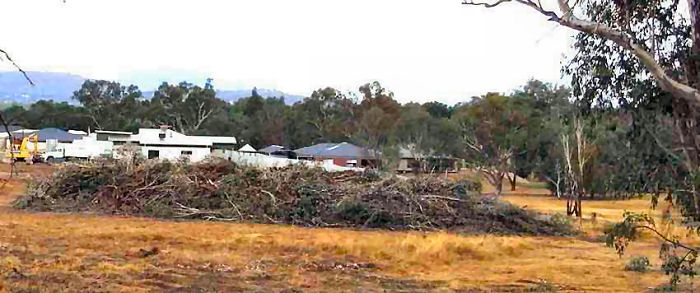

 Radiocarbon-testing has confirmed that a giant rare old-growth Eucalyptus regnans located in its natural forest habitat on East Gippsland's Brown Mountain has been chainsawed by VicForests, despite it being scientifically confirmed to be at least 500 years old.
Radiocarbon-testing has confirmed that a giant rare old-growth Eucalyptus regnans located in its natural forest habitat on East Gippsland's Brown Mountain has been chainsawed by VicForests, despite it being scientifically confirmed to be at least 500 years old. No regard has been made for the existence value of a Victorian 500 year old natural asset, nor the habitat requirements for the typical arboreal animals and forest owls dependent on this old growth habitat tree or its associative forest dependent habitat. Under State-sanction, ignorant VicForest butchers have plundered, ransacked and run.
No regard has been made for the existence value of a Victorian 500 year old natural asset, nor the habitat requirements for the typical arboreal animals and forest owls dependent on this old growth habitat tree or its associative forest dependent habitat. Under State-sanction, ignorant VicForest butchers have plundered, ransacked and run.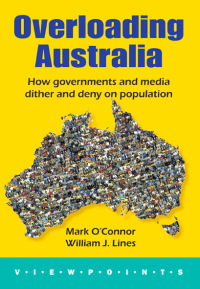 For those with their eyes open population growth and the immigration that fuels it are never out of the news. ... unaffordable housing drives young families into debt slavery (even pushing some to the less-expensive urban fringe where a number died in Melbourne’s recent fires)... strained infrastructure leading to blackouts, cancelled train services... traffic congestion, draining energy from the economy and from human lives...hospitals that can no longer care for the people they serve... water supplies that dwindle as drought and growth desiccate cities and stretch the capacity of farms... pleasant suburbs degraded by intensive redevelopment; greenhouse gases ...and a natural environment wilting under the burden of numbers.
For those with their eyes open population growth and the immigration that fuels it are never out of the news. ... unaffordable housing drives young families into debt slavery (even pushing some to the less-expensive urban fringe where a number died in Melbourne’s recent fires)... strained infrastructure leading to blackouts, cancelled train services... traffic congestion, draining energy from the economy and from human lives...hospitals that can no longer care for the people they serve... water supplies that dwindle as drought and growth desiccate cities and stretch the capacity of farms... pleasant suburbs degraded by intensive redevelopment; greenhouse gases ...and a natural environment wilting under the burden of numbers.

 The Property Council of Australia's "Sustainable Urban Growth Conference" was the scene of lively protest for the first time as demonstrators against unsustainable population growth and infrastructure expansion handed out leaflets about peak oil and population to incoming conference participants. See also the second part of:
The Property Council of Australia's "Sustainable Urban Growth Conference" was the scene of lively protest for the first time as demonstrators against unsustainable population growth and infrastructure expansion handed out leaflets about peak oil and population to incoming conference participants. See also the second part of: 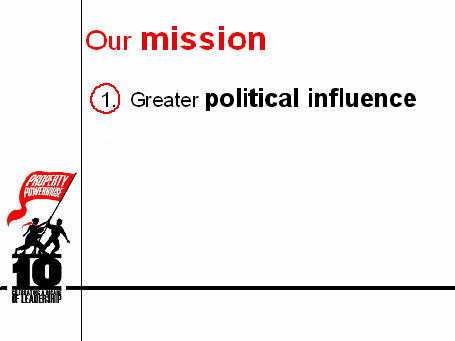 From a Property Council powerpoint presentation slide
From a Property Council powerpoint presentation slide

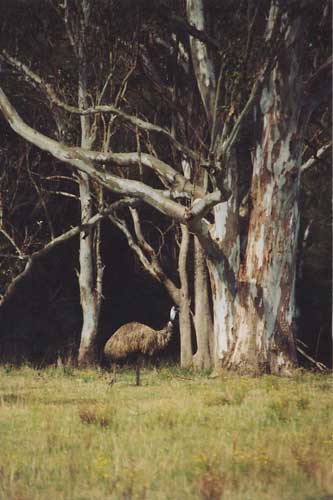

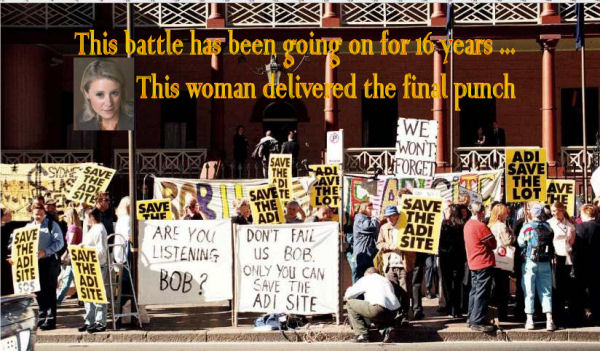
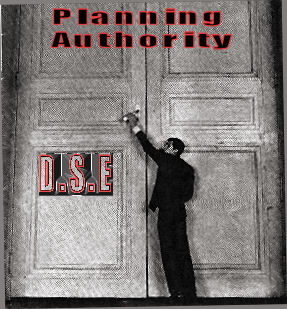

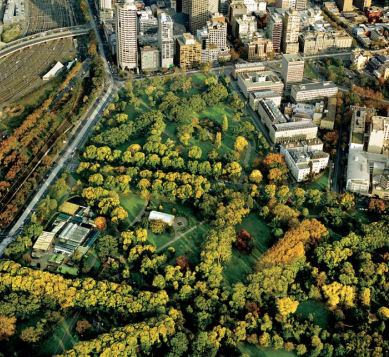
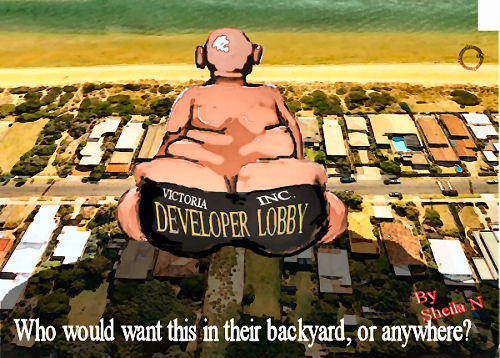 Editor's introduction. We were amused to read of this report in the Age and it seems a fitting introduction to the analysis below by A.H. of the infamous 'New Residential Zones for Victoria.
Editor's introduction. We were amused to read of this report in the Age and it seems a fitting introduction to the analysis below by A.H. of the infamous 'New Residential Zones for Victoria. 
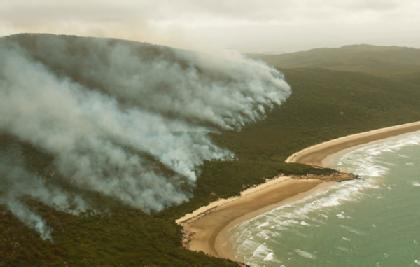

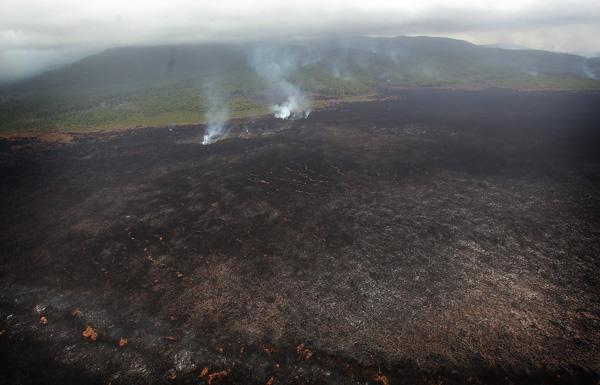
 Illustration from an oil portrait by Sheila Newman of Barry Jones, Chairman of Australia's Population Carrying Capacity Inquiry, 1994
Illustration from an oil portrait by Sheila Newman of Barry Jones, Chairman of Australia's Population Carrying Capacity Inquiry, 1994


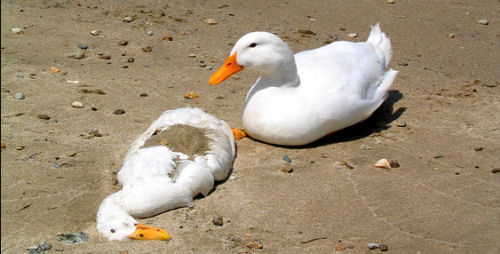


 The final version of Jaws dwarfs all the others. This new monster is eating towns up alive. This is not just a battle to the death; this is WAR! In the novel, Jaws, the monster was not really a white pointer shark, it was the property development lobby, which metastasized with the colonisation of a modest fishing town by rich people from other places. Developers drew power from the wealthy tourists and sea-changers. They took over the original fishing town for their own purposes and democracy seemed fatally wounded. Right to the point of the shark (the developers) trying to eat the boat (symbol of the fishing industry which had begun the town). Until an odd bunch of people had the guts to stand up to the big developers.
The final version of Jaws dwarfs all the others. This new monster is eating towns up alive. This is not just a battle to the death; this is WAR! In the novel, Jaws, the monster was not really a white pointer shark, it was the property development lobby, which metastasized with the colonisation of a modest fishing town by rich people from other places. Developers drew power from the wealthy tourists and sea-changers. They took over the original fishing town for their own purposes and democracy seemed fatally wounded. Right to the point of the shark (the developers) trying to eat the boat (symbol of the fishing industry which had begun the town). Until an odd bunch of people had the guts to stand up to the big developers. 

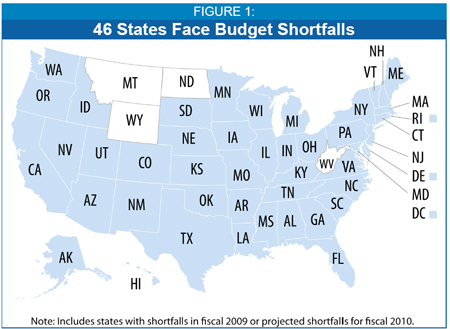


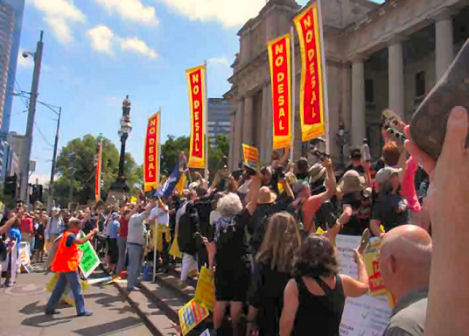
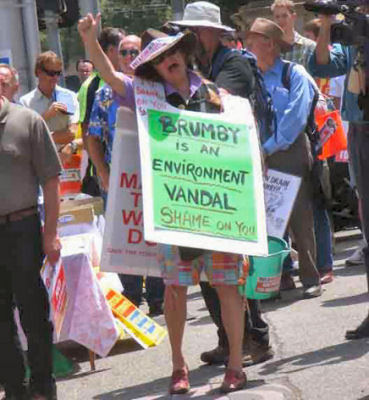
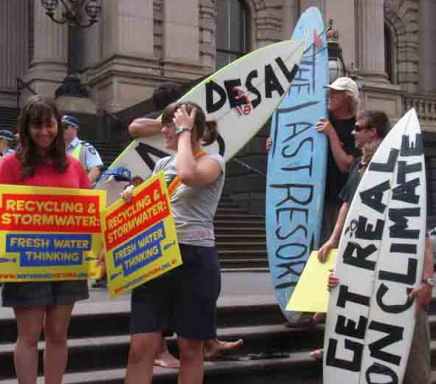
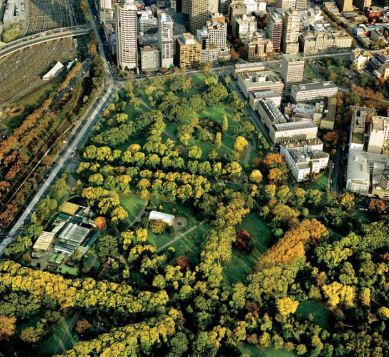
 A Re-Classification of Devilbend is critical to preventing the total demise of wildlife on the Mornington Peninsula: designation change from a ‘Natural Features Reserve’, to a ‘Nature Conservation Reserve’. Interconnecting wildlife corridors, through private land, minimum 200 metres in width and the rigorous preservation and restoration of Devilbend as a central core Reserve are essential.
A Re-Classification of Devilbend is critical to preventing the total demise of wildlife on the Mornington Peninsula: designation change from a ‘Natural Features Reserve’, to a ‘Nature Conservation Reserve’. Interconnecting wildlife corridors, through private land, minimum 200 metres in width and the rigorous preservation and restoration of Devilbend as a central core Reserve are essential.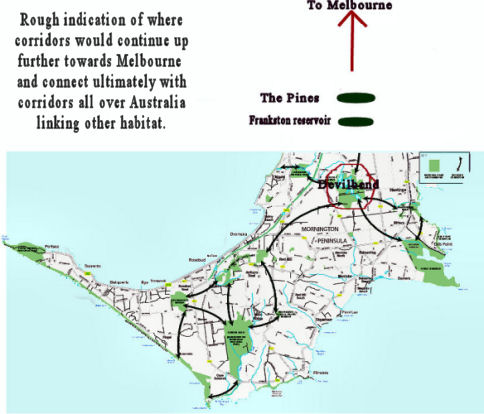
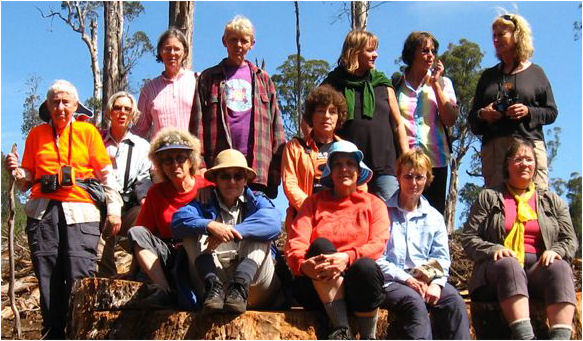
 But, right now, everyone is relying on this little guy:, the Endangered Orbost Spiny Cray (Euastacus diversus), who, if the law is respected, has a right to a buffer-zone of 100 m on either side of the creek he lives in.
But, right now, everyone is relying on this little guy:, the Endangered Orbost Spiny Cray (Euastacus diversus), who, if the law is respected, has a right to a buffer-zone of 100 m on either side of the creek he lives in.
Recent comments